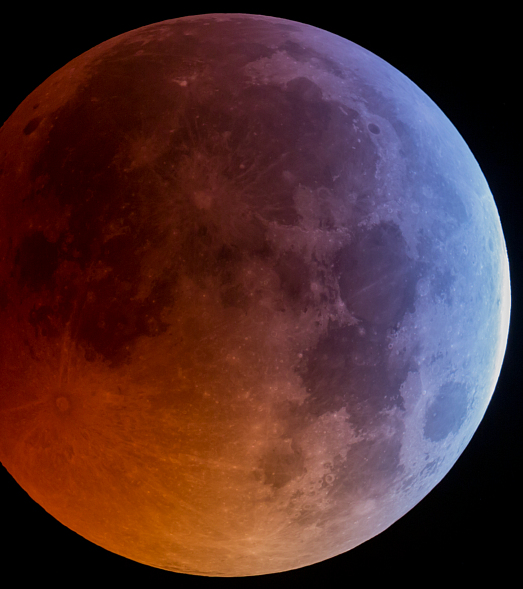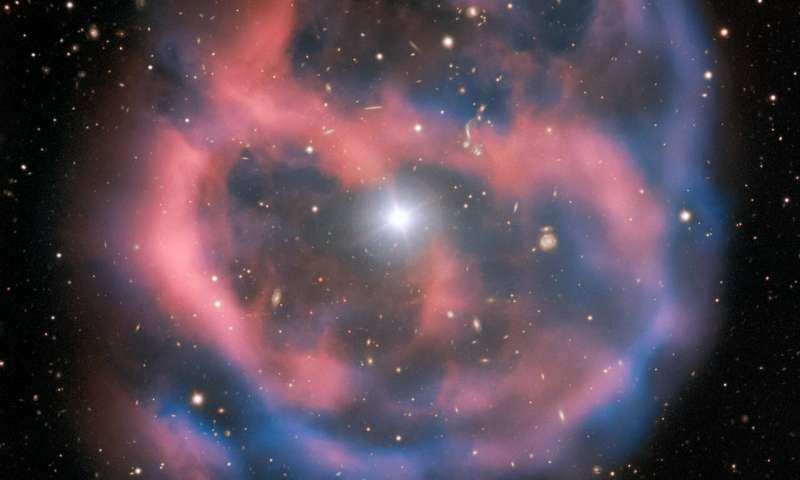At http://spaceweather.com (22nd January 2019) … a meteoroid was seen to strike the Moon during the recent lunar eclipse (see the video). Meteoriods hit the Moon all the time. NASA has been observing impact flashes since 2005 – and they occur as frequently as one every 2 or 3 hours.
Lunar eclipses are supposed to be red yet when the Moon passed through the ruddy shadow of the Earth on January 20th many observers saw a different colour – turquoise blue. See below …
 … the source of the colour blue is ozone (in the stratosphere).
… the source of the colour blue is ozone (in the stratosphere).
At https://phys.org/print467375204.html … a shell of glowing ionised gas. The last gasp of a dying star (visible at the centre of the image) ..,

At https://phys.org/print467363388.html … the black hole at the centre of our galaxy, known as Sagitarrius A, comes from a smaller region than previously thought. Is this a game changer. We are told this may indicate a 'radio jet' from Sagitarrius A is pointed almost directly at our solar system – but is it. A foggy cloud of hot gas has prevented astronomers from making sharp images of the black hole, casting doubt on its true nature. They have now used an array of telescopes to peer through the fog but the source of origin outwitted them as it was so small. This is being explained away by saying it is pointing in our direction. However, what if it is so small as it is little more than a single jet? New observations will be interesting.
At https://phys.org/print467398266.html .. a new estimate of the Hubble constant using split images of quasars. The Hubble Constant is a number that is thought to relate distances to red shift of galaxies – the amount that light is stretched as it travels to Earth through the expanding universe. Without a precise value for the constant astronomers cannot accurately determine the size of remote galaxies, the age of the universe, or the expansion history. The emeasurement is 8 per cent higher than those using the cosmic microwave background.
